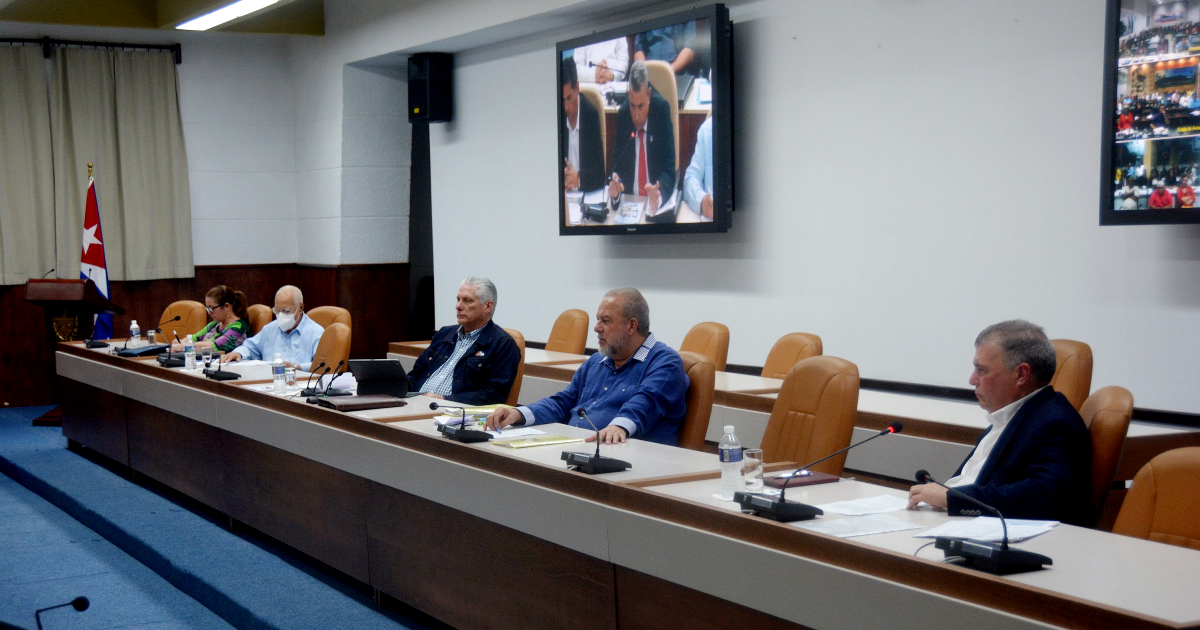
The collapse of tourism It is a reality that has been manifesting itself even since before the pandemic, with increasingly critical figures for a key sector in the regime's economy, which Last year it fell below 2 and a half million visitors.
However, the Cuban official press He welcomed the news with optimism and celebrated the words of the ruler Miguel Diaz-Canel during the annual balance meeting of the Ministry of Tourism (MINTUR) held last Thursday in the halls of the Palace.
Cuba received 2,436,980 visitors in 2023, which represented 69.6 percent of the plan, according to the place of the Presidency of Cuba. Although the figure shows an increase of more than 51 percent compared to the previous year (1,614,087 visitors in 2022), it was below the expectations of the regime, which expected to reach 3.5 million tourists in 2023.
"Tourism serves to reactivate thermoelectric plants, to buy more food, to provide raw materials to producers, to provide more well-being and quality of life to the people in general. You already know that Cuba is a socialist State, which has a lot of social justice, such as free public health and education, and that has a cost," he commented in November 2022, Juan Carlos García Granda, Cuban Minister of Tourism.
In a meeting with the press held on that date at the World Tourism Fair World Travel Market, in London, García Granda assured that the Cuban government expected to receive some 3.5 million international visitors in 2023, double the number of tourists who visited Cuba in 2022.
Committed to his “correction of distortions to re-boost the economy,” last Thursday Díaz-Canel proposed “defend what is Cuban in everything” as a formula to relaunch tourist activity on the Island.
“How [are we] going to supply what we don't have or aren't going to have? What do we have that can distinguish and impact?... [We] have many things that are unique to Cuba; What we have to do is see how we offer them, how they are put into account for tourism and how they can make a difference,” said the also first secretary of the Communist Party.
Before the specialists of the sector, Díaz-Canel spoke of “originality, culture of detail and touch of distinction” and asked “how to manage to have? How to delight? What type of service can we offer and what is not expected? the tourist and who does not have it anywhere else? How do we socialize the best experiences?
“In other words, it is about creating, proposing, and innovating, and there is enough talent here to find an answer to what we are proposing,” highlighted the Palace tenant and strategist of the “creative resistance.”
Enforcing the teachings of the dictator Fidel Castro of “doing more with less”, the leader of the so-called 'continuity' called for “do things better with the resources available”.
“How do we truly become the locomotive of the Cuban economy? How do we solve that? We urge”Díaz-Canel concluded.
What the ONEI Report says and what the Cuban regime is hiding
For his part, García Granda stated that “2024 will continue to be a very challenging year for the development of tourism activity,” while presenting a report in which he collected data such as that 92 percent of tourists in Cuba expressed a level of “general satisfaction”, a little less than 90% stated that they would be willing to repeat the visit to the already known facilities; and almost 93 said they intended to recommend the place visited.
What the leaders of the regime nor the journalists at their service did not mention is that almost 15 percent of the visitors who arrived in Cuba (358,481) were “visitors from the Cuban community living abroad,” according to the Report from the National Office of Statistics and Information (ONEI).
“The concealment of the official tourism statistics itself in the press release of the MINTUR annual balance is astonishing. There is no mention of the Cuban community or the United States as the second and fourth issuers of international visitors in 2023,” Cuban economist Pedro Monreal noted in X, noting that both groups “contributed 2.8 times more tourists than Russia and 1. 6 times more tourists than the combined total of the five main emitters in Western Europe.”
For Monreal, “setting the goal of overcoming ‘the barrier of three million visitors’ seems somewhat bizarre for a country that has already exceeded 3 million on six consecutive occasions between 2014 and 2019, including 4.7 million visitors in 2018.”
If the ONEI data are considered valid, the income of the Cuban regime's tourism entities in 2023 was 170 million 495 thousand 987 pesos, of which some approximately 25 million they would come “from the Cuban community living abroad”; and a similar number of American visitors, calling into question the "blockade" argument constantly put forward by Havana.
“If tourism takes off and advances, everything begins to move; The chain of everything begins and agriculture and industry benefit, production begins, and from there the population also begins to benefit," stated the prime minister. Manuel Marrero Cruz.
There may also be movement of cadres in MINTUR, warned the one who was head of MINTUR from 2004 to 2019, because “lunlike the paintings”.
Despite the widespread crisis facing the country, neither Marrero Cruz nor Díaz-Canel mentioned the ONEI data (August 2023) that shows that The Cuban regime invested four times more in hotels and restaurants than in Public Health and Social Assistance in the first half of that year (583.3 million pesos in health and social assistance VS. 2,325.3 million for hotels and restaurants).
Nor did they remember García Granda's statements when at the beginning of 2022 he announced to Spanish businessmen, prior to the Madrid International Tourism Fair (FITUR), that the regime aspired to receive six million tourists by 2030, for which in the coming years it would promote the construction of hotel facilities in the main centers of the country.
What do you think?
SEE COMMENTS (9)Filed in: